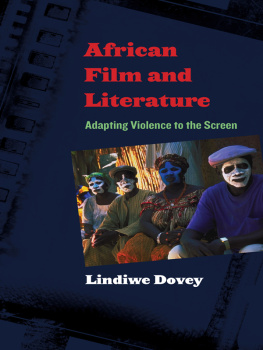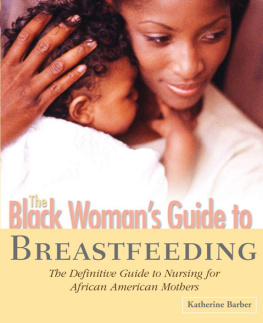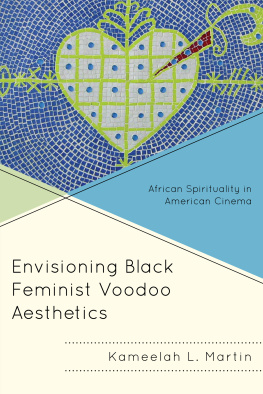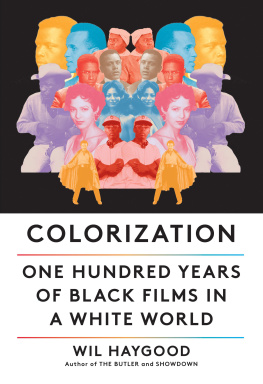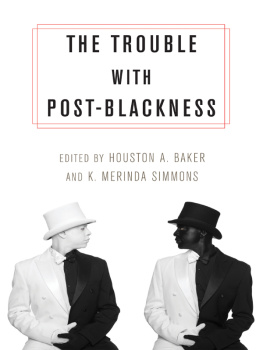2019 by the Board of Trustees
of the University of Illinois
All rights reserved
Library of Congress Cataloging-in-Publication Data
Names: Durkin, Hannah, author.
Title: Josephine Baker and Katherine Dunham: dances in literature and cinema / Hannah Durkin.
Description: Urbana: University of Illinois Press, 2019. | Includes bibliographical references and index. |
Identifiers: LCCN 2019002879 (print) | LCCN 2019019361 (ebook) | ISBN 9780252051463 (ebook) | ISBN 9780252042621 | ISBN 9780252042621 (cloth: alk. paper) | ISBN 9780252084454 (paperback : alk. paper)
Subjects: LCSH: Baker, Josephine, 19061975Criticism and interpretation. | Dunham, KatherineCriticism and interpretation. | African American women dancersBiographyHistory and criticism. | African American women dancersBiography. | Dance in literature. | Dance in motion pictures, television, etc.United States. | Dance in motion pictures, television, etc.Europe. | African Americans in motion pictures.
Classification: LCC GV1785.A1 (ebook) | LCC GV1785.A1 D87 2019 (print) | DDC 792.80922dc23
LC record available at https://lccn.loc.gov/2019002879
Acknowledgments
This book would not have been possible without the financial support of the University of Nottingham and the U.K. Arts Humanities Research Council (AHRC). Overseas study grants from Nottingham, the AHRC, and the British Association of American Studies (BAAS) also helped to fund a crucial visit to the following archives: the Missouri History Museum Library and Research Center; the Morris Library Special Collections Research Center, Southern Illinois University Carbondale; the Manuscript, Archives, and Rare Book Library, Emory University; the Moving Image Section, Motion Picture, Broadcasting and Recorded Sound Division, Library of Congress; and the Beinecke Library, Yale University. I would also like to thank BAAS and the Eccles Centre for American Studies for providing a travel grant that allowed me to spend several weeks at the British Library. The advice of individual archivists has been invaluable and I am incredibly grateful to the staff at the above institutions, who all went out of their way to help. Molly Kodner at the Missouri History Museum even took time out of her busy schedule to show me surviving Katherine Dunham dance company costumes.
Nor could this book have been completed without the support of countless colleagues, mentors, and hugely supportive friends at the University of Nottingham and Newcastle University. I owe a particular debt of thanks to Professor Dave Murray, who helped to steer me in the direction of the original research project on which it was based and guided it through its early stages; Professor Sharon Monteith, who took over from Professor Murray in helping to shape it; and Professor Celeste-Marie Bernier, who supported my work tirelessly from start to finish and continues to be a key pillar of inspiration and advice. They have been more helpful and encouraging than I could ever have hoped and it has been an incredible privilege to learn from them. I would also like to thank Professors Judie Newman and John Howard for reviewing the manuscript at a crucial phase and for their generous thoughts and comments, and Professor Richard King, Dr. Ian Brookes, Dr. Nick Heffernan, and Dr. Graham Taylor, and other members of the University of Nottingham Music Listening and Race on Film groups for their endless ideas and encouragement.
Professor Alan Rice and Dr. Fionnghuala Sweeney have been friends and informal mentors since I started out in academia and I would be lost without their guidance. My scholarship has also been shaped by the expertise of the Institute for Black Atlantic Research at the University of Central Lancashire, of which Professor Rice is a director, and I owe a particular debt to Professor Lubaina Himid CBE, Dr. Raphael Hoermann, and fellow Josephine Baker expert Jade Montserrat for their exceptional knowledge and friendships. I would also like to thank the many audience members who listened and responded to ideas from this book at conferences, symposia, and workshops, not least the organizers and fellow members of the University College Dublin Clinton Institute Summer School and Heidelberg Center for American Studies Spring Academy, who took the time to comment on the project in its early stages.
I had the tremendous good fortune to have Dawn Durante as my editor at the University of Illinois Press and benefited hugely from her expert guidance, patience, and support. I am also incredibly grateful to the many other staff members at the University of Illinois Press who have worked really hard and patiently on this book, including Jennifer Argo, Kevin Cunningham, Alison Syring, and copyeditor Nancy Albright. Thanks too to the anonymous readers for taking the time to evaluate and comment on my work and for making this a better book.
Finally, I would like to express my profoundest gratitude to friends and family outside of academia. Catherine and Helen have been pillars of support for the duration of this book and for years beyond. Last but not least, I thank my parents Liz and Gerry; my siblings Frances, Joe, and Sam; their respective partners Rob, Gonia, and Jen; my aunt Mary; and my niece Lily. None of my work would have been possible without their love and encouragement. Whenever I encountered hurdles, they always found ways to help. This book is dedicated to them.
An earlier version of part of was published as Dance Anthropology and the Impact of Haiti on Katherine Dunham's Scientific and Artistic Consciousness, International Journal of Francophone Studies 14.12 (2011): 12342.
Introduction
In an interview during the making of the French film Zouzou (1934), U.S.-born Black dance icon Josephine Baker declared that, I sometimes think that it is my own life that's unfolding on the set, self-consciously positioning the film as autobiographical. By connecting the picture with her own experiences, Baker pointed to ways in which the European imaginary conflated its exotic fantasy with her offstage identity while underscoring the production's debt to her artistry. Fellow international Black dance icon Katherine Dunham's films also drew on her fame as a choreographer to the extent that narratives were centered on her art and she even showcased her own company in rehearsal on screen. That Baker and Dunham's movie appearances were openly autobiographical highlights connections between their life stories and film narratives and the value of both in uncovering their contributions as Black women to twentieth-century transatlantic culture. Cinematic and literary spaces were for Baker and Dunham sites of mediation and marginalization in which they shared authorship with white men. Their interventions across both forms highlight the distortions and exclusions of racist cultural imaginaries on both sides of the Atlantic in the three decades prior to the civil rights era. Yet they are also rare visual and textual records of Black women dancers midcentury artistry and authorship.
This study investigates Baker and Dunham's self-inventions on screen and in writing to map the intellectual underpinnings and visual impact of their art. By scrutinizing Baker and Dunham's choreographic practices and narrative voices, I shed new light on the ways in which they were received on both sides of the Atlantic and how they engaged personally with dominant critical interpretations of Black performance as crude and innate. My study evidences both women's extensive contributions to cinema and the memoir form and shows how they sought to challenge racist paradigms by constructing celebratory visions of Black womanhood in literature and cinema. Most of Baker and Dunham's work took place on the stage rather than on the page and screen. Nevertheless, their authorial interventions across both mediums were prolific and radical. Baker was the first Black woman to enjoy a starring role in mainstream cinema and Dunham was the first Black film choreographer to be credited for her work. Equally, they were the first well-known African American women to produce multivolume accounts of their lives, and their writings serve as valuable firsthand documents of African American women's interwar experiences. Their literary and cinematic careers demand collective attention for several reasons. On the page, they gave voice to the challenges of navigating interwar global spaces as young Black women and their narratives shed vital light on the origins and purpose of their art. Their writings also evidence their lifelong commitment to international egalitarianism. On the screen, they claimed the right to stardom while at the same time retaining some artistic autonomy and even shaping their films aesthetics.


